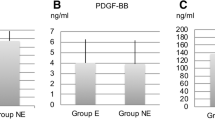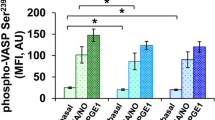Abstract
Platelets stored as concentrates are gradually activated (storage lesion), a process associated with changes in the expression of platelet procoagulant activity (PPCA). The aim of the present study was to evaluate the evolution of PPCA and the mean platelet volume (MPV) of stored platelets prepared according to the platelet-rich method (PRM) and the buffy coat method (BCM). Using the platelet factor 3 availability clotting test (PF3AT) on appropriately diluted concentrate samples, we found a decrease in PPCA expression of remnant platelets as a function of storage time (0.025<p<0.01 between day 1 and 7) in PRM-derived but not in BCM-derived platelet concentrates. Using the PF3AT reduction test we found a more important clotting time reduction in samples obtained from BCM than in samples obtained from PRM platelet concentrates, suggesting a higher PPCA expression of BCM platelets, not significant after 1 day but highly significant after 3 days (p<0.0005) and after 7 days (p<0.0005) of storage, as compared with PRM platelets. For both PRM and BCM concentrates there were no significant MPV changes as a function of storage time, but at any storage day the MPV of BCM concentrates was significantly higher (p<0.0005) than the MPV of PRM concentrates. We conclude that the decrease of PPCA expression in PRM-derived concentrates as a function of storage time is in agreement with the gradual decrease of the platelet activation status in PRM concentrates during storage. There are probably several factors or variables causing platelets of BCM concentrates to express higher PPCA than those of PRM concentrates. Higher PPCA expression in BCM concentrates may be explained by an intrinsic platelet property, such as a difference in MPV between the two kinds of concentrates, or it may be related to an extrinsic factor such as different storage media, e.g., undiluted autologous plasma in PRM concentrates versus Plasmalyte A-diluted autologous plasma in BCM concentrates. Whether the difference in PPCA expression of remnant platelets in PRM and BCM concentrates is just an in vitro laboratory finding or may have consequences for the therapeutic efficiency of the concentrates is an interesting, still unresolved question.
Similar content being viewed by others
Author information
Authors and Affiliations
Additional information
Received: April 3, 1998 / Accepted: October 1, 1998
Rights and permissions
About this article
Cite this article
Van der Planken, M., Vertessen, F., Mortelmans, E. et al. The evolution of platelet procoagulant activity of remnant platelets in stored platelet concentrates prepared by the platelet-rich plasma method and the buffy coat method. Ann Hematol 78, 1–7 (1999). https://doi.org/10.1007/s002770050463
Issue Date:
DOI: https://doi.org/10.1007/s002770050463




